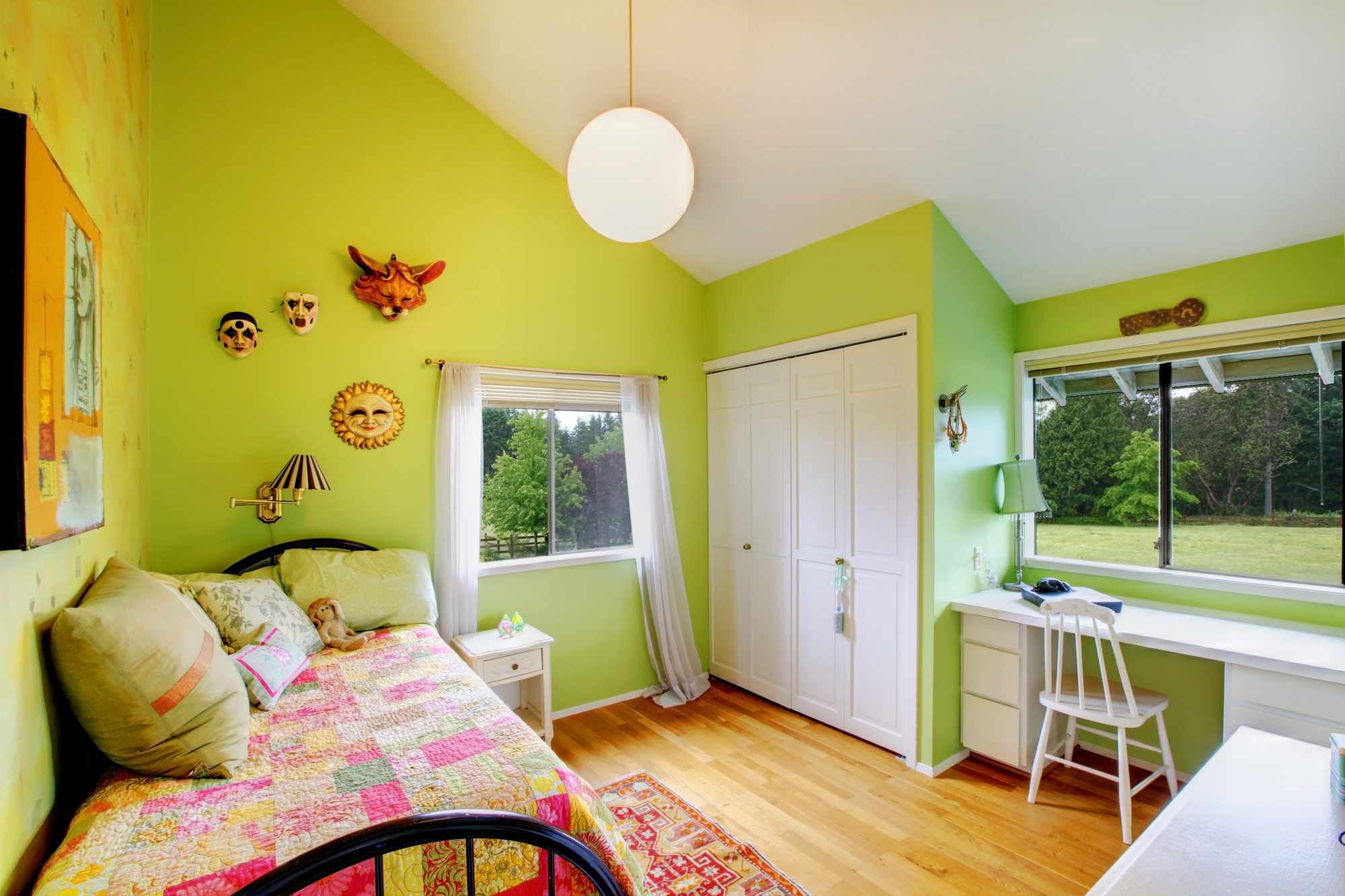Are you ready to give your living room a fresh new look? Painting the walls is a great way to update the space and add some personality to your home. But if you've never painted a room before, you may have some questions. Don't worry, we've got you covered. In this article, we'll answer the top 10 frequently asked questions about painting a living room. So grab your paintbrush and let's get started! Painting FAQ: How to Paint a Room
Painting a room may seem like a daunting task, but with the right tools and techniques, you can achieve professional-looking results. Here are 10 easy steps to follow when painting your living room: Step 1: Choose your paint colors and gather supplies. Step 2: Prepare the room by moving furniture and protecting floors and trim with drop cloths or painter's tape. Step 3: Clean the walls and repair any holes or imperfections with spackling compound. Step 4: Sand the walls lightly to create a smooth surface for painting. Step 5: Apply primer to the walls to help the paint adhere and provide a uniform base color. Step 6: Mix your paint and pour it into a paint tray. Step 7: Start painting from the top of the wall, using a roller for large areas and a brush for edges and corners. Step 8: Allow the first coat to dry completely before applying a second coat if needed. Step 9: Remove painter's tape and touch up any areas that need it. Step 10: Clean up and admire your newly painted living room! How to Paint a Room: 10 Steps to Painting Walls Like a DIY Pro
Painting a room may seem like a straightforward task, but there are some tips and tricks that can make the process easier and ensure a professional-looking finish. TIP 1: Use high-quality paint and tools for better results. TIP 2: Don't skimp on preparation - clean and repair walls before painting. TIP 3: Use a paintbrush for edges and corners, and a roller for larger areas. TIP 4: Paint in a "W" or "M" shape for even coverage with a roller. TIP 5: Don't overload your paintbrush or roller with paint - it can lead to drips and a messy finish. TIP 6: Use a primer for better color and coverage, especially if painting over a dark color. TIP 7: Paint in natural light for more accurate color selection and application. TIP 8: Take your time and work in small sections to avoid mistakes. TIP 9: Allow paint to dry completely in between coats. TIP 10: Have fun and be creative with your color choices - it's just paint and can always be changed! How to Paint a Room: Tips on Painting Interior Walls
Q: Do I need to use a primer before painting my living room? A: While it's not always necessary, using a primer can help the paint adhere to the walls and provide a more even base color. Q: How much paint do I need for a living room? A: This will depend on the size of your room and the type of paint you're using, but a general rule of thumb is 1 gallon of paint for every 400 square feet of wall space. Q: Can I paint over wallpaper? A: It's not recommended to paint over wallpaper, as the paint may not adhere properly and could lead to peeling or bubbles. It's best to remove the wallpaper before painting. Q: What type of paint finish should I use for a living room? A: This will depend on personal preference, but a satin or eggshell finish is often a good choice for living rooms as it provides some sheen and is easy to clean. Q: How do I clean my paintbrushes? A: For latex paint, simply rinse the brush with warm water and mild soap. For oil-based paint, use mineral spirits or paint thinner to clean the brush. Q: Can I paint over dark-colored walls with a lighter color? A: Yes, but you may need to apply multiple coats of paint to achieve full coverage. Q: How long does it take for paint to dry? A: This will depend on the type of paint and the humidity, but most paints will be dry to the touch within 1-2 hours. Q: Do I need to use a specific type of paint for different types of surfaces? A: Yes, it's important to use the appropriate type of paint for the surface you're painting. For example, use a high-gloss paint for trim and a flat or eggshell finish for walls. Q: Can I paint over a glossy paint? A: Yes, but you may need to lightly sand the surface to help the new paint adhere. Q: How long will a painted room last? A: A properly painted room can last for many years, but it's important to keep up with regular maintenance and touch-ups as needed. Painting a Room: FAQs
If you're looking for a comprehensive guide on how to paint a room, you're in the right place. In this article, we've covered everything from choosing paint colors and supplies to tips and tricks for achieving a professional finish. By following these steps and using our helpful tips, you'll be able to confidently paint your living room and give it a fresh new look. How to Paint a Room: The Ultimate Guide
Q: Do I need to use a specific type of roller for painting walls? A: Yes, it's recommended to use a 3/8 inch nap roller for most wall surfaces. Thicker naps may be needed for rougher surfaces. Q: Can I use the same paint for walls and ceilings? A: Yes, but it's important to choose a paint that is specifically labeled for both walls and ceilings. Q: How do I prevent drips and splatters when painting? A: Use a drop cloth to protect floors and furniture, and make sure to properly load your brush or roller with paint to avoid drips and splatters. Q: How do I prevent paint from drying out in the paint tray? A: Place a damp cloth or paper towel over the paint tray when taking a break to keep the paint from drying out. Q: How do I fix a mistake while painting? A: If the paint is still wet, you can use a damp cloth or paper towel to wipe away the mistake. If the paint has dried, you may need to sand and touch up the area with more paint. Q: Can I paint over oil-based paint with latex paint? A: Yes, but you may need to use a primer first to help the latex paint adhere to the oil-based paint. Q: How do I choose the right paint color for my living room? A: Consider the lighting in your room, the overall style and color scheme of your home, and your personal preferences when selecting a paint color. Q: Can I paint over a textured wall? A: Yes, but it may require more coats of paint to achieve full coverage. Q: Do I need to remove outlet covers and light switch covers before painting? A: It's recommended to remove these covers to avoid getting paint on them. If you're unable to remove them, use painter's tape to cover them and protect them from paint. Q: Can I paint over a glossy finish? A: Yes, but it's important to lightly sand the surface and use a primer for better adhesion. Painting a Room: Frequently Asked Questions
If you're new to painting, don't worry - it's a skill that can be easily learned with a little practice. By following these steps and helpful tips, you'll be able to confidently paint your living room and achieve professional-looking results. Don't be afraid to experiment with different colors and techniques - painting is a fun and creative way to update your home. How to Paint a Room: A Beginner's Guide
When it comes to painting a living room, there are some additional tips and tricks that can help you achieve a beautiful and cohesive look. TIP 1: Consider the color scheme of your home when choosing a paint color for your living room. TIP 2: Use a smaller brush or painter's tape to create clean lines and edges when painting trim and corners. TIP 3: Use a paint sample or test swatch to see how the color looks in your living room before committing to painting the entire room. TIP 4: Use a primer or tinted primer to help cover up imperfections and provide better color coverage. TIP 5: Don't be afraid to mix and match paint colors to create an accent wall or add some visual interest to your living room. TIP 6: Use a paint sprayer for larger walls or ceilings to save time and achieve a smoother finish. TIP 7: Take your time and be patient - a rushed paint job will likely result in mistakes and an uneven finish. TIP 8: Don't forget to paint the ceiling for a complete and polished look. TIP 9: Use a damp cloth to wipe away any accidental paint drips or splatters before they dry. TIP 10: Have fun and don't stress too much - painting is a fun and creative way to update your living room! Painting a Living Room: Tips and Tricks
How to Choose the Perfect Paint Color for Your Living Room

Creating a Welcoming and Stylish Space
 When it comes to decorating your living room, choosing the right paint color can make all the difference. Not only does it set the tone and mood for the space, but it also has the power to make a small room feel larger or a large room feel cozier. With so many options available, it can be overwhelming to know where to start. In this article, we will guide you through the process of selecting the perfect paint color for your living room, ensuring that it becomes the heart of your home.
When it comes to decorating your living room, choosing the right paint color can make all the difference. Not only does it set the tone and mood for the space, but it also has the power to make a small room feel larger or a large room feel cozier. With so many options available, it can be overwhelming to know where to start. In this article, we will guide you through the process of selecting the perfect paint color for your living room, ensuring that it becomes the heart of your home.
Consider the Function of the Room
 Before you begin picking out paint colors, it is important to consider the function of your living room. Is it a space for entertaining guests or a cozy spot for family movie nights? The function of the room will play a big role in the color you choose. For a more formal and elegant space,
rich and bold colors
such as deep blues or emerald greens can create a sophisticated atmosphere. On the other hand,
lighter and softer colors
like pastel pinks or muted yellows are perfect for a more relaxed and casual living room.
Before you begin picking out paint colors, it is important to consider the function of your living room. Is it a space for entertaining guests or a cozy spot for family movie nights? The function of the room will play a big role in the color you choose. For a more formal and elegant space,
rich and bold colors
such as deep blues or emerald greens can create a sophisticated atmosphere. On the other hand,
lighter and softer colors
like pastel pinks or muted yellows are perfect for a more relaxed and casual living room.
Take Inspiration from Your Existing Décor
 Another important factor to consider when choosing a paint color for your living room is the existing décor. Look at the colors and patterns in your furniture, rugs, and artwork for inspiration.
Complementary colors
can add depth and interest to a room, while
monochromatic color schemes
can create a cohesive and serene space. If you are unsure, choose a neutral color for the walls and add pops of color through accessories and accents.
Another important factor to consider when choosing a paint color for your living room is the existing décor. Look at the colors and patterns in your furniture, rugs, and artwork for inspiration.
Complementary colors
can add depth and interest to a room, while
monochromatic color schemes
can create a cohesive and serene space. If you are unsure, choose a neutral color for the walls and add pops of color through accessories and accents.
Consider the Lighting in Your Living Room
 Lighting can have a significant impact on how a paint color appears in a room. Natural light can make colors appear brighter and more vibrant, while artificial light can make them appear duller and cooler. It is important to take into account the type of lighting in your living room when choosing a paint color.
Warm colors
like yellows and oranges can counteract cool artificial lighting, while
cool colors
like blues and greens can balance out warm natural light.
Lighting can have a significant impact on how a paint color appears in a room. Natural light can make colors appear brighter and more vibrant, while artificial light can make them appear duller and cooler. It is important to take into account the type of lighting in your living room when choosing a paint color.
Warm colors
like yellows and oranges can counteract cool artificial lighting, while
cool colors
like blues and greens can balance out warm natural light.
Test the Color Before Committing
 Once you have narrowed down your choices, it is important to test the paint color before committing to it. Many paint companies offer small sample sizes that you can use to paint a small section of your wall. This will give you a better idea of how the color will look in your specific space. Additionally, it is important to view the color at different times of the day to see how it changes in different lighting.
Once you have narrowed down your choices, it is important to test the paint color before committing to it. Many paint companies offer small sample sizes that you can use to paint a small section of your wall. This will give you a better idea of how the color will look in your specific space. Additionally, it is important to view the color at different times of the day to see how it changes in different lighting.
In Conclusion
 Choosing the perfect paint color for your living room can seem like a daunting task, but with these tips and considerations, you can create a welcoming and stylish space that reflects your personal style. By considering the function of the room, taking inspiration from your existing décor, and testing the color before committing, you can confidently choose a paint color that will make your living room the heart of your home.
Choosing the perfect paint color for your living room can seem like a daunting task, but with these tips and considerations, you can create a welcoming and stylish space that reflects your personal style. By considering the function of the room, taking inspiration from your existing décor, and testing the color before committing, you can confidently choose a paint color that will make your living room the heart of your home.







/105776921-56a49f225f9b58b7d0d7e0ee.jpg)



































































